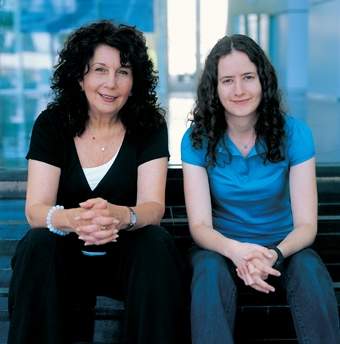עיתונאיות ועיתונאים, הירשמו כאן להודעות לעיתונות שלנו
הירשמו לניוזלטר החודשי שלנו:

Desperate times require extreme measures. Cells that find themselves in desperate situations stop the continuous production of non-essential proteins and go on to an alternate “emergency footing,” in which only the “disaster response” proteins that the cell needs to face the immediate crisis are generated.
In a crisis, either the survival skills of the cell are shored up or, if the damage to the cell is so great as to be irreparable, a mechanism for committing cell suicide, called apoptosis, is turned on. Some of the proteins involved in either response – apoptosis or cell survival – carry a special tag called IRES that gives them access to an alternate mechanism for translating genetic information into proteins – one that’s separate from the cell’s normal translation machinery. In this way, the cell can still produce certain proteins – even in an extreme situation in which the normal mechanisms have shut down.
Scientists had assumed that the emergency footing and its attendant activation of the emergency response genes would be declared only in times of distress. But a study by Weizmann Institute scientists is challenging that assumption, showing that the emergency administration is also active during “peacetime,” working in parallel to the normal one. The team, headed by Prof. Adi Kimchi of the Molecular Genetics Department, reported some surprising results in an article that recently appeared in Molecular Cell: Two of the genes that play a role in the cell cycle and in cell survival are actively turned on by the emergency mechanism – in addition to the everyday mechanism – even when the cells are under no stress whatsoever.
A few years ago, Kimchi had isolated a gene called DAP5 that encodes a protein tied to the emergency regime. In another study, conducted with research student Sivan Henis-Korenblit, she found that the DAP5 protein binds to IRES tags and thus regulates the emergency gene translation system. For the present study, Kimchi and her students Noa Liberman and Lea Marash created cells that don’t produce DAP5. To their surprise, they found that their cells were suffering an unusually high suicide rate, even in non-stressful conditions. They were even more surprised to find that these deaths were taking place at a specific stage in the cell life cycle – during cell division. The scientists realized that DAP5 must function to avert the chain of events leading to cell death in healthy cells.
To investigate further, the research team scanned around 200 genes known to be involved in the cell cycle and in its programmed death mechanisms, seeking those that interact with DAP5, as well as changes occuring in other proteins when DAP5 is missing. They identified two genes – one that is known to be active during cell division and is important for cell survival at this stage, and another that is known to hinder apoptosis and also to play a role in cancer. These two genes carry the “identity tag” – the IRES – that allows them to use the emergency translation mechanism.
Finding the cells’ emergency response team and its overseer DAP5 working in times of peace and quiet raises a new set of questions for the researchers: Do the emergency regime and the regular, daily administration of the cell run things in parallel, or do they alternate? What do the cells gain by maintaining both types of management? Kimchi and her team plan to continue investigating this alternative system, specifically asking which genes are activated when, how various conditions affect the system and what logic underlies its existence.
Prof. Adi Kimchi’s research is supported by the M.D. Moross Institute for Cancer Research. Prof. Kimchi is the incumbent of the Helena Rubinstein Professorial Chair in Cancer Research for Outstanding Women Scientists.